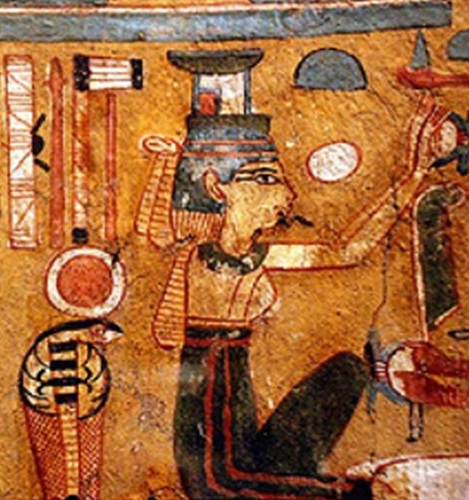Let’s start with that: women were crucial in Ancient Egypt for the dead’s resurrection.
The rite of the professional mourning ritual in ancient Egyptian funerals was based on the Osirian theology.
That happened becasue in the belief of Ancient Egypt the dead (Osiris) was regenerated thanks to aid of his wife/sister Isis (and by extension of his sister/sister in law Nephthys).
She was able to recover many vital functions to the corpse: breath, movement, virility…Not for nothing the image of Isis (and of Nephthys) was present in funerary artefacts (coffins, sarcophagi, caponic chests…)

Goddess Nephthys from a coffin in Brooklyn Museum
We also know that in some moment of the history of Ancient Egyp that regenerating role was responsibility also of Serket and Neith. They formed with Isis and Nephthys a group of four goddesses who contributed actively to the dead’s resurrection. That is why, their images were present in funerary furniture (sarcophagi, ushabti boxes, canopic shrine…).
hat shows how important were women/goddesses for the dead’s resurrection from a professional and official point of view. Their status in this sphere was high enough to become indispensable.
What happened in the Egyptian thought in this regard during the Amarna Period? Under the reign of Akhenaton these divinities disappeared from the pantheon. However, the need of a resurrection did not disappear.
Funerals, mummification, tombs… still existed. But what happened with the concept/image of women/goddesses, who performed a role in the resurrection?






